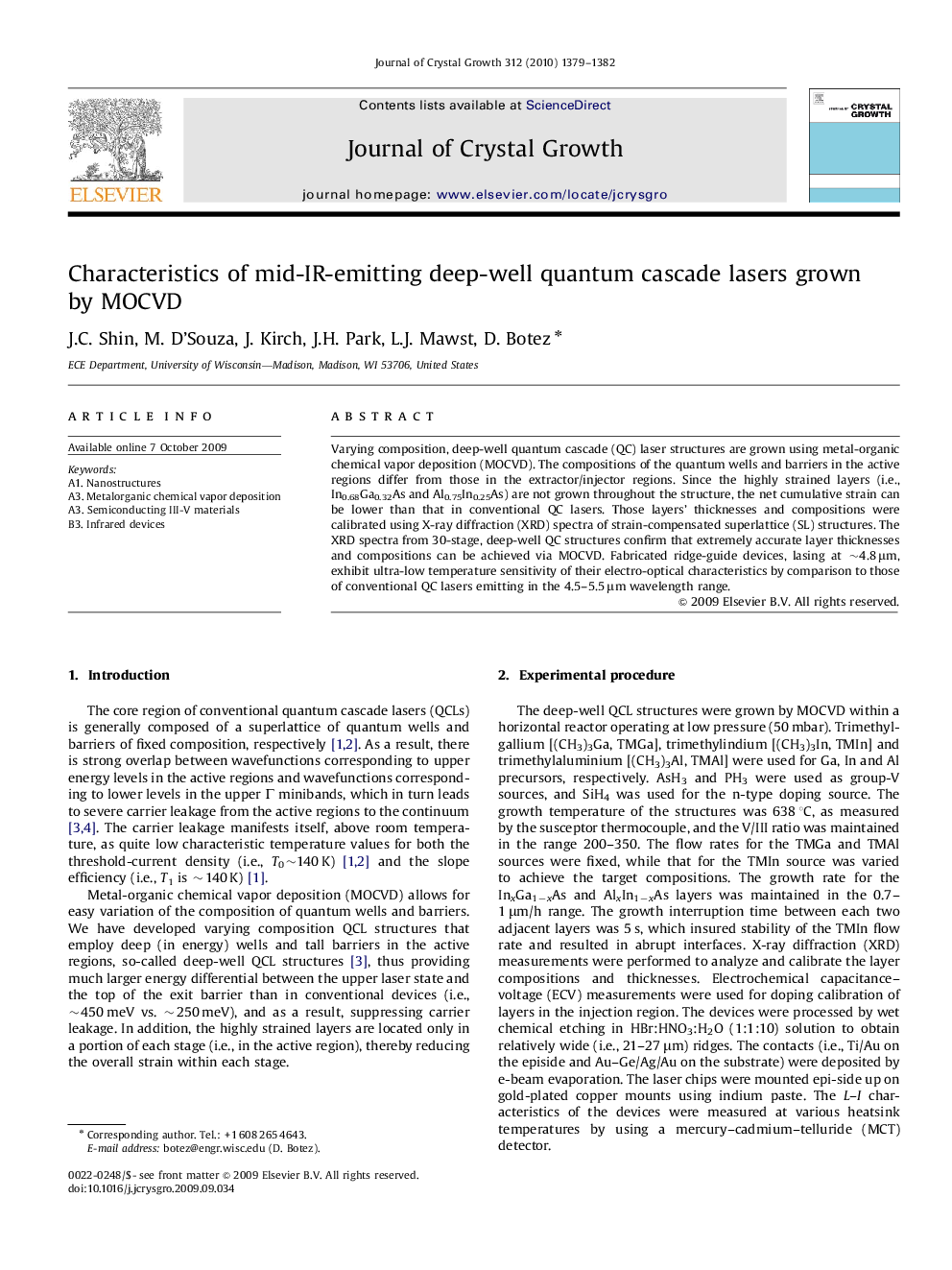| Article ID | Journal | Published Year | Pages | File Type |
|---|---|---|---|---|
| 1793511 | Journal of Crystal Growth | 2010 | 4 Pages |
Varying composition, deep-well quantum cascade (QC) laser structures are grown using metal-organic chemical vapor deposition (MOCVD). The compositions of the quantum wells and barriers in the active regions differ from those in the extractor/injector regions. Since the highly strained layers (i.e., In0.68Ga0.32As and Al0.75In0.25As) are not grown throughout the structure, the net cumulative strain can be lower than that in conventional QC lasers. Those layers’ thicknesses and compositions were calibrated using X-ray diffraction (XRD) spectra of strain-compensated superlattice (SL) structures. The XRD spectra from 30-stage, deep-well QC structures confirm that extremely accurate layer thicknesses and compositions can be achieved via MOCVD. Fabricated ridge-guide devices, lasing at ∼4.8 μm, exhibit ultra-low temperature sensitivity of their electro-optical characteristics by comparison to those of conventional QC lasers emitting in the 4.5–5.5 μm wavelength range.
